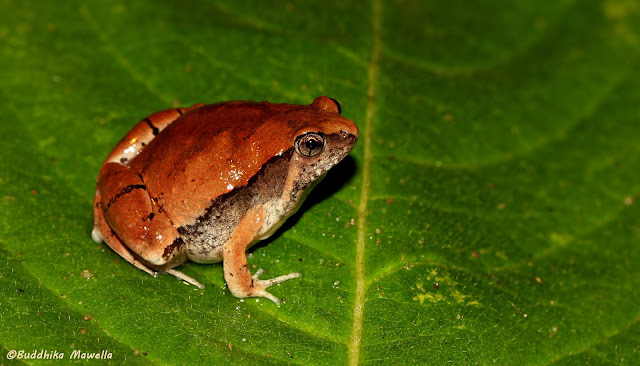Sinhala: දුම්බර වකරැලි මැඩියා [Dumbara wakareli madiya]
Binomial: Lankanectes pera
For more than 150 years, it was believed that the genus Lankanectes is monotypic and the genus consists of a one species named, Lankanectes corrugatus. But later, a group of researchers observed an amphibian in Knuckles mountains that was very similar to previously known L. corrugatus, but having some morphological differences.
Finally in 2018, they have described the Lankanectes population resides in the knuckles mountain range as a new species by giving the name, Lankanectes pera. Species was named after University of Peradeniya and the name 'Pera' is a short form of the name for University of Peradeniya which is being used by many university students.
Genetic studies have also been carried out to compare genetic differences between L. corrugatus and the knuckles population of Lankanectes. Results from DNA barcoding and phylogenetic analyses have shown that L. pera differs from L. corrugates by 3.5−3.7% uncorrected genetic distances for 16S rRNA, which is adequate to name the knuckles population as a separate species. Based on the study, they have concluded that the new species defers from L. corrugates in external morphology, genetics and climatic niche.
Distribution of L. pera is very limited and they have been restricted to higher altitude streams flowing through the montane forests in the Knuckles region where elevation is about 1100m above the sea level. Also, the environments they live have already been threatened by human activities. Hence, some immediate conservation actions must be taken to protect this rare frog.
Referance:Senevirathne, Gayani & Samarawickrama, Pradeep & Wijayathilaka, Nayana & Manameendraarchchi, Kelum & Samarawikrama, DRNS & Meegaskumbura, Madhava. (2018). A new frog species from rapidly dwindling cloud forest streams of Sri Lanka—Lankanectes pera (Anura, Nyctibatrachidae). Zootaxa. 4461. 519-538. 10.11646/zootaxa.4461.4.4.









